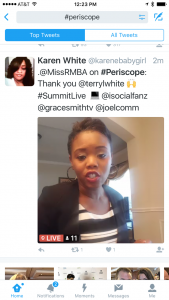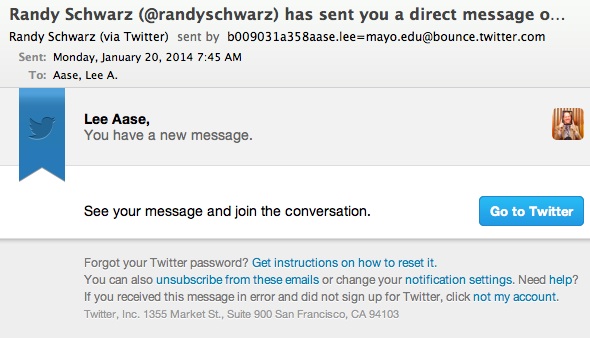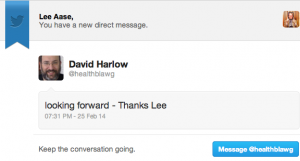The announcement has a bit of an asterisk because it isn’t across all platforms yet (but that can’t be too far off, right?), but this week’s big news is that videos from Periscope are now being included in the Twitter news feed, at least on iOS devices.
Here’s how it appears when you’re scrolling through your feed on Twitter (to find this one I just did a search using the #Periscope tag):
You’ll note in the lower left of the video there’s a red box that says “LIVE” and also a counter of how many people are currently watching.
The video starts playing as soon as you scroll over it, although there is no sound at first.
It’s much like the experience of automatically scrolling video on Facebook and Twitter.
When you click on the video, it expands to full screen and looks like this:
Note that the follower count has moved to the lower right, and at the top is a button that says “Open Periscope to Chat.”
I think this is an important change that will lead to
- significantly higher exposure for Periscope videos,
- increased use of the Periscope app, and
- further integration with Twitter on all platforms.
This current release only allows watching ‘scopes on Twitter; you can’t comment or give hearts. But just as pre-recorded Facebook and Twitter videos have gotten significant traction, so should live streams (or archives of up to 24 hours) from Periscope.
You can interact with Periscope video on Twitter just as you would with any other content, but those comments aren’t integrated back within the Periscope platform. At least for now.
When we were choosing which live-streaming mobile platform to use at Mayo Clinic, one of the main advantages we saw for Periscope was that it’s owned by Twitter, and that new broadcasts can be announced from our Twitter account.
Having Periscope videos show up in iOS Twitter news feeds is a big step.
Next request: It would be GREAT to be able to send Periscope users to a hyperlinked account page (like we have for Twitter or Facebook or YouTube) to make it easier for them to subscribe.
What new features would you like to see on Periscope?





